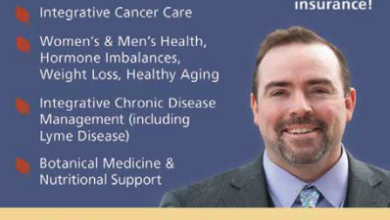Prostate Cancer: Treatment Risks vs Benefits
I recall meeting my first prostate cancer patient many years ago. The cancer had spread all over his body and was no longer responding to his prescribed treatments. I recall being disappointed as he told me how the cancer had been found in a localized area and that his physician had recommended very aggressive treatment despite a very low-grade disease. This was common in those days and fortunately is much less so today.
Amazingly, he had a miraculous response to some novel therapeutic approaches we implemented. His immune system was able to clear away much of the disease and he left the clinic with no evidence of cancer. Sadly, 4 years later, the disease was rapidly spreading again and did not respond to any of the therapies. He passed away a short time later. Although I have since had many incredible prostate cancer miracle cases, I still often think back to that patient and the pain and heartache his family felt with his absence.
The truth is, the majority of men with prostate cancer are going to survive the disease but there are a few important pieces of information I have picked up along the way that I feel are important to share:
#1: Do not be afraid to get regular check-ups, especially if you are having urinary symptoms.
Catching prostate cancer early is one of the most important things you can do. The earlier you catch it, the more likely you are to survive and thrive after treatment. There are even unique tests that can help avoid an unnecessary biopsy.
#2: Less is often more.
Depending on the grade of disease, active surveillance is commonly recommended. This means that the best choice is to wait and watch. Other times, aggressive disease may require a lot more therapy but there are always choices.
#3: Active surveillance means active surveillance.
Be consistent with regular check-ins, labs, and imaging. It’s very important that you do the watch part of the wait and watch. Ignoring something doesn’t mean it will go away.
#4: Use low risk treatments during active surveillance.
Simple botanical and nutritional treatments that decrease inflammation and improve health can often slow or diminish the risk of disease spread. If the risk of doing these natural therapies is extremely low and the benefit can mean longer and better quality of life, why not do it?
#5: If you catch the cancer later, there are still many options for treatment.
Surgery isn’t always the best option and many men would rather not live with the post-surgical side effects. Thus, doing your homework to determine some of the other therapeutic options is worth considering.
#6: Not all prostate cancer is the same.
Outside of determining how aggressive the cancer is there are many other genetic, hormonal, and mutational components to determining the best treatment options.
Always remember that cancer is only a word, not a sentence. GI Joe had it right when they said, “knowing is half the battle.” Once we know there is prostate cancer, we can address it and make choices that mitigate risk and side effects and ultimately bring us the best quality and quantity of life, even in the face of a difficult diagnosis.


